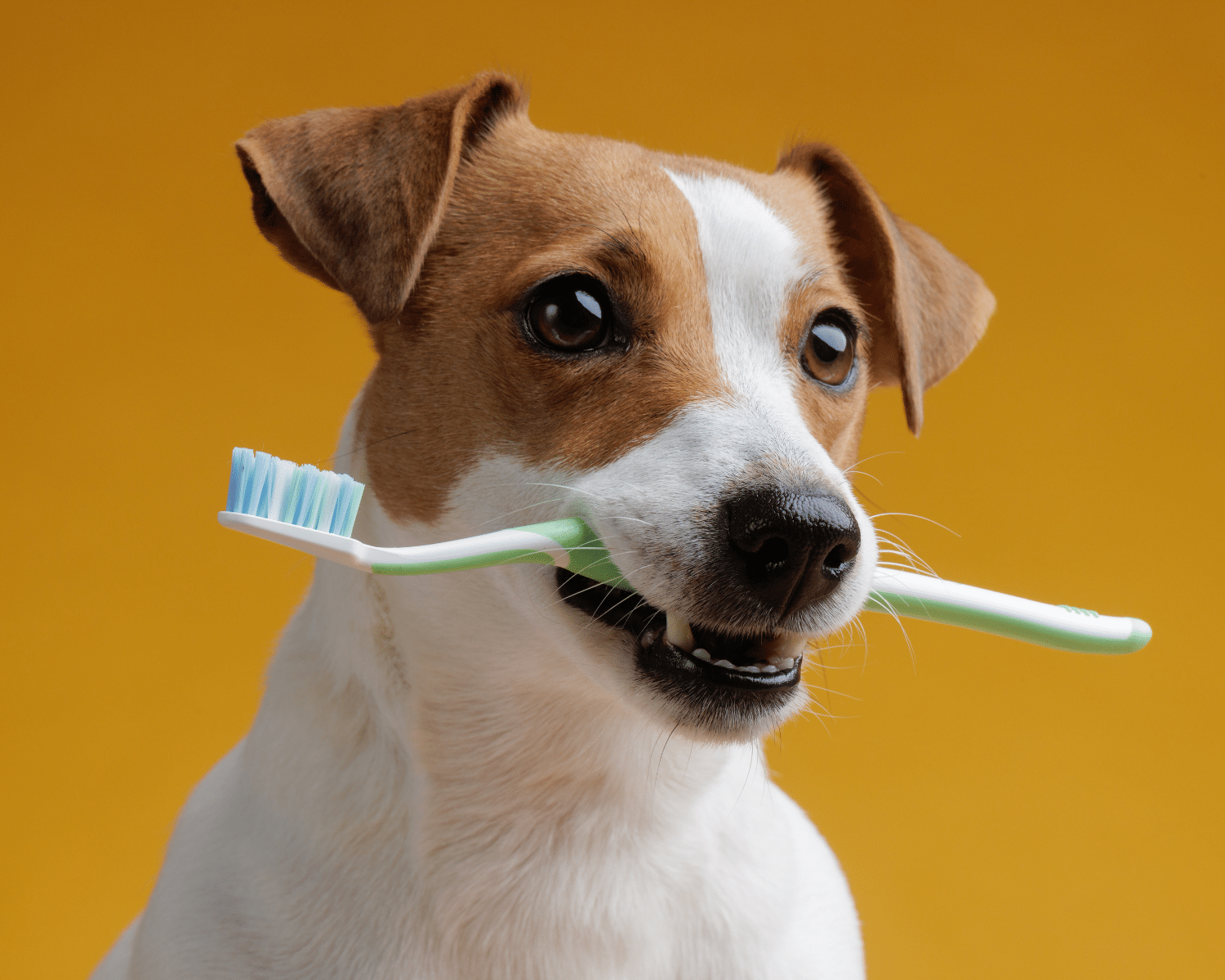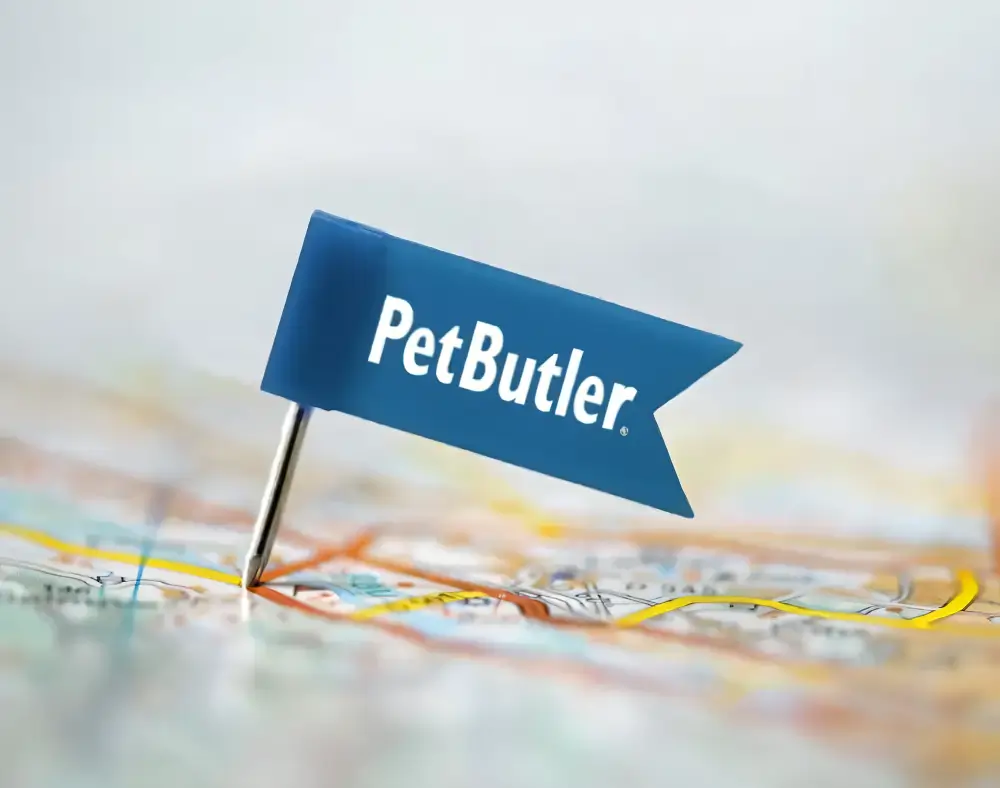Most of us know the importance of regular dental care for ourselves and our human family members. We are taught, at a young age, to brush at least twice daily, using circular strokes along the gumline to loosen debris and to floss in-between our pearly whites to clear the remnants of lunch from between the teeth.
Plaque, that disgusting film made up of bacteria and food particles, can turn into tartar when left undisturbed and exposed to the mineral components of saliva. Not only does the presence of tartar and plaque lead to terrible breath and unsightly stains, but serious health complications such as gum recession, inflammation, bone loss, and potentially tooth loss if left unmanaged. An angry, unclean oral cavity can act as a portal for bacteria invaders, traveling through the tiny blood vessels in a dog’s mouth causing disease in organs such as the heart, kidney, and liver.
Dog’s Mouths are Cleaner than Humans
Not true! Pets’ mouths are no different than ours, requiring daily brushing using products with antimicrobials, such as chlorhexidine, or the use of abrasive chews. Some dental treats, like Oravet, contain a product called delmopinol which provides a protective barrier on teeth to prevent bacteria from adhering. Oral rinses are also available to keep our pets’ mouths healthy.
But, just like humans, most pets will require professional cleaning, scaling, and radiographic examination of the tooth and surfaces below the gumline. You can’t treat what you can’t see, and because over 80% of dogs older than 3 have active dental disease, a veterinary-supervised dental evaluation and treatment plan is essential.
Anesthesia vs. Non-Anesthesia
Because dental care under anesthesia for your best friend can be cost-prohibitive and just downright scary, anesthesia-free dental cleanings are becoming one popular option for eliminating calculus and plaque. While routine scaling above the gumline may help improve the appearance of your dog’s mouth, be sure you are aware of the risks and limitations of anesthesia-free dentistry. The American Veterinary Dental College, American Veterinary Medical Association, and the American Animal Hospital do not support this cosmetic procedure.
Here are a few reasons why:
- It doesn’t address periodontal disease and gingivitis, or inflammation of the tissues around and under the gumline, where most oral health problems exist. Anesthesia-free dental cleanings give dog owners’ a false sense of security.
- Scaling causes small defects in the tooth enamel from manual scraping, which are prime spots for adherence of future oral bacteria, accelerating plaque and tartar accumulation leading to more oral disease. In humans, we have those micro-fissures eliminated by a polishing step which isn’t possible in a wide-awake pet.
- “Anesthesia-free” means your pet isn’t intubated and their airway is not protected. Pets can’t be told not to swallow or move during the procedure, which can lead to aspiration of the loosened oral bacteria and tartar and possibly pneumonia. An endotracheal tube protects the pet’s airway while supplying oxygen and gas anesthetic.
- Intraoral X-rays can’t be completed while your pet is awake. Tooth root fractures, abscesses, and even certain cancers can all lurk below the gumline.
- Pets can be subjected to fear and pain as large pieces of tartar are manually cracked from the surface of the tooth leading to aggression or fearful behavior next time the pet is approached to examine the mouth or touched around its head. It can be hard for animals to remain perfectly still during the procedure and it isn’t uncommon to accidentally scrape sensitive gum tissue with the scaling instruments.
Anesthesia is incredibly safe when performed by a competent veterinary team and your pet has proper monitoring. Most problems that occur under anesthesia are due to undiagnosed, pre-existing diseases such as cardiomyopathies or bleeding disorders.
A thorough pre-op exam and blood testing can help determine if your pet isn’t a candidate for anesthesia. I have countless stories of senior pets who had periodontal disease and extractions detected and performed under anesthesia; pet owners tell me by eliminating disease and painful teeth their pets were playing and eating like puppies again.
It’s our responsibility as pet parents to make sound medical decisions to keep our dogs healthy; with a toolbox including chews, pastes, rinses, and a veterinary-directed oral care plan, we can do our best to keep their mouths in tip-top shape!

